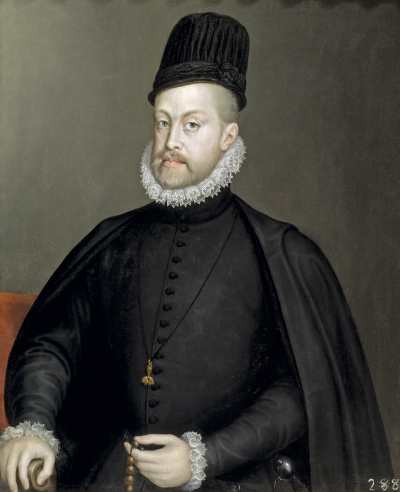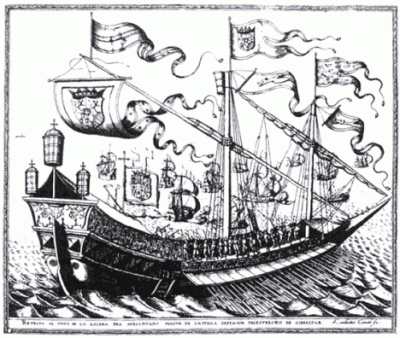The La Herradura Shipwrecks
The 'galera' were the warships of the Mediterranean, but they were not always that seaworthy
October 1562, and Felipe II, Philip the Prudent, the only son of Charles V of the Holy Roman Empire, Charles I of Spain, was King of Spain, Naples and Sicily and ruler of the Netherlands and Spain’s overseas empire.

Felipe II - Photo Wikipedia
He had come to the Spanish throne after the abdication of his father and pursued an aggressive foreign policy from the start. One of his main concerns was control of the Mediterranean, which was seen as key in combating the rising power of the Ottoman Empire and in safeguarding communications with the rest of the Spanish Empire.
The 'galera' or galleys were the warships of the Mediterranean, massive ships with up to 500 crew which were not left subject to the vagaries of the wind, but were propelled by more than 20 banks of oarsmen on each side. The rowers were slaves or criminals who had been sentenced to the galleys for their crimes.

Engraving of Spanish war 'galera' - www.hispanismo.org
A fleet of 28 galleys, commanded by Don Juan de Mendoza y Carrillo, set sail from Málaga on October 18 1562, after loading up with supplies to continue onwards to North Africa after a mission to defend the Spanish coasts from attack by pirates. The fleet set sail in an easterly wind amid signs of an impending squall and began to experience problems as they approached the area which is known today as Rincón de la Victoria. It was here that the wind suddenly changed direction and two of the galleys collided. De Mendoza ordered that the ‘Soberana de España’ be lashed to two of the other galleys and towed for the rest of the journey.

Don Juan de Mendoza y Carrillo - Wikipedia
As the weather worsened, the fleet, now also battered by lashing rain, battled its way along the coast. After a night of intensive rowing after being forced to lower their sails in the ever-increasing winds, the ships finally reached the bay of La Herradura. But their hopes for shelter were dashed shortly after anchoring near the easterly point of the bay when the wind changed direction again, and a storm came crashing down on the fleet, giving it no time to raise anchor and seek protection on the other side of the bay at Cerro Gordo.
De Mendoza ordered the oarsmen to be released as the fury of the waves moved the galleys from one side to the other without control. They began to crash into each other and were destroyed or sunk. María del Carmen Calero Palacios, Professor at Granada University, says the survivors jumped into the sea, but were dragged down by the undercurrent or were killed by the timber and floating debris.
By 1 o’clock on October 19, 25 of the fleet of 28 galleys had gone down and, by the time the weather calmed at 4 o’clock that afternoon, around 5,000 sailors had lost their lives, including the fleet’s commander, Don Juan de Mendoza y Carrillo. Two thousand people survived. They were mainly galley slaves, who fled inland to Vélez Málaga and Lentejí, but were later recaptured.
The catastrophe was mentioned by Miguel de Cervantes in his ‘Don Quijote de la Mancha’, ‘… who was daughter of Don Alonso de Marañón, Knight of the Order of Santiago, who was drowned at La Herradura’. A commemorative plaque with a passage from the novel can be seen near Almuñécar’s Iglesia de San José, while on La Herradura’s paseo marítimo a sculpture by the Granada sculptor, Miguel Moreno, ‘ Don Juan de Mendoza y Carrillo’, stands in memory of the shipwrecked sailors.
